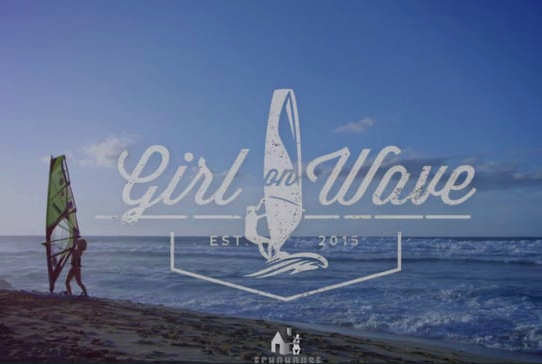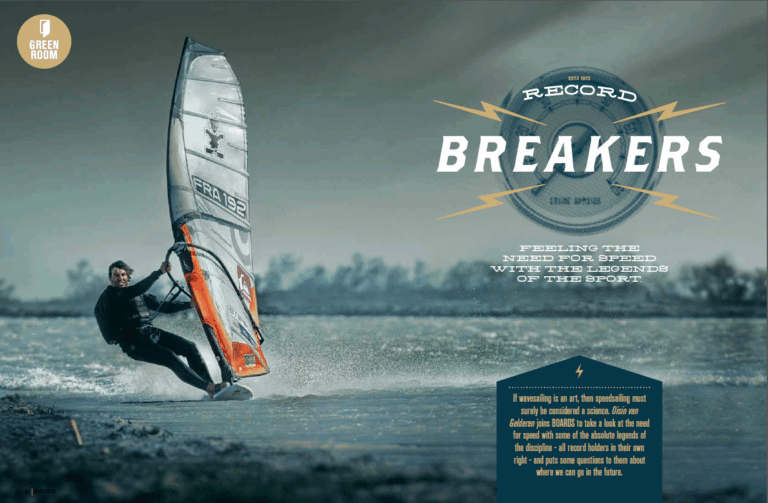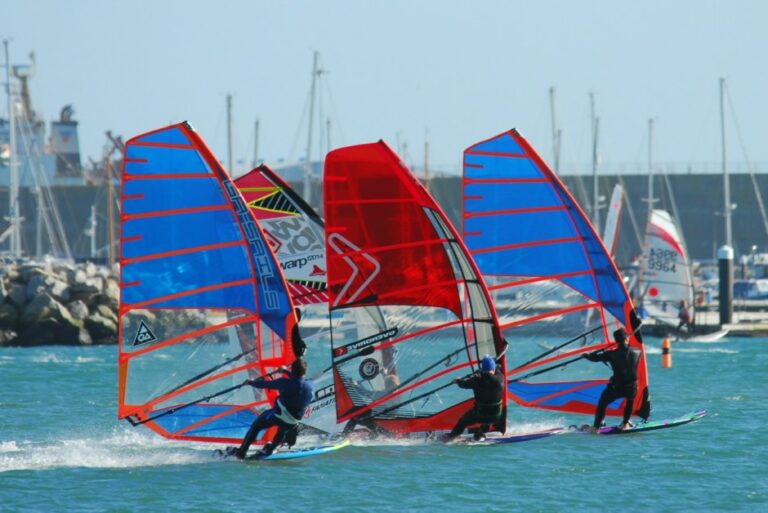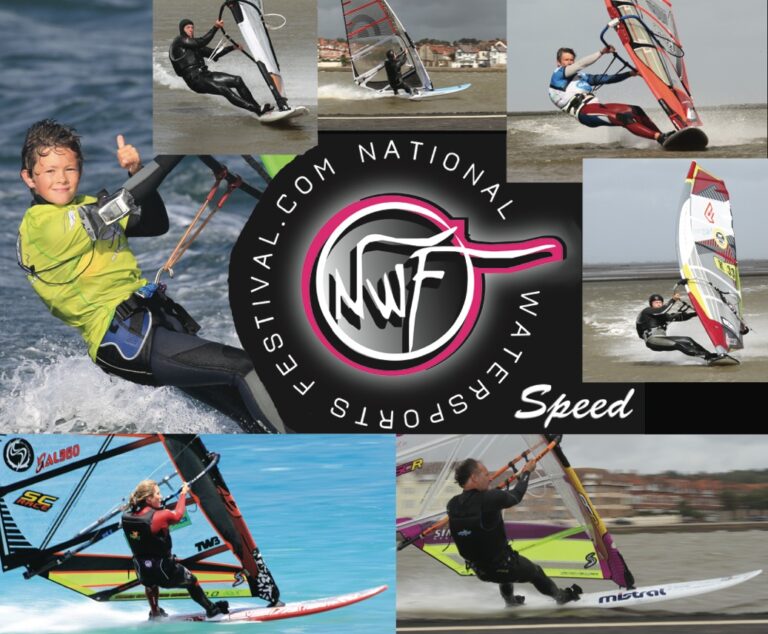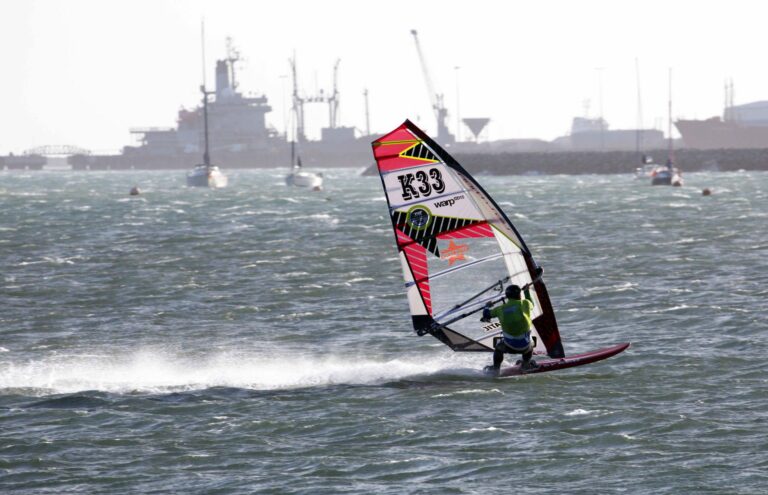Every year the top brands invest in development with the aim of making equipment faster and more refined than ever before. It’s not always easy to feel the difference year-on-year, but if we take a step back it’s easy to see equipment is still developing at quite a pace.
One of the UK’s (and the world’s) fastest men, Jim Crossley has decided to wind the clock back 25 years, to when windsurfing was attracting huge sponsors and development budgets were almost limitless, to test the most iconic kit of this time and evaluate the progress that has been made since. As part of the test he put these up to 25-year-old relics head to head with 2015 equipment… with the help of his GPS.
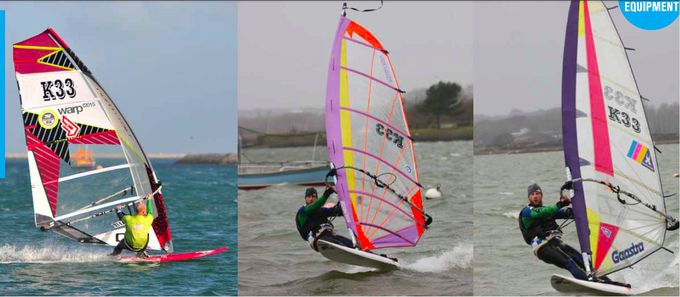
The Dream Quiver
In the late 80s speedsailing was huge and there was no bigger name than Pascal Maka; Pascal broke world speed records with the groundbreaking Gaastra Speedfoil Pro. This 1990 model was the final incarnation of the legendary sail in this form.
The NeilPryde World cup slalom sail from 1991 was the work of Barry Spanier and had Bjorn Dunkerbeck completely dominating the world cup slalom racing. The world witnessed the beginning of a sail design revolution.
The board everybody was talking about was the F2 Sputnik 270 shaped by Peter Thommen. Dave White smashed the world production board speed record in 1991 with 42.16 knots…so I bought a mint 1991 edition!
Gaastra Speedfoil 4.4 1990
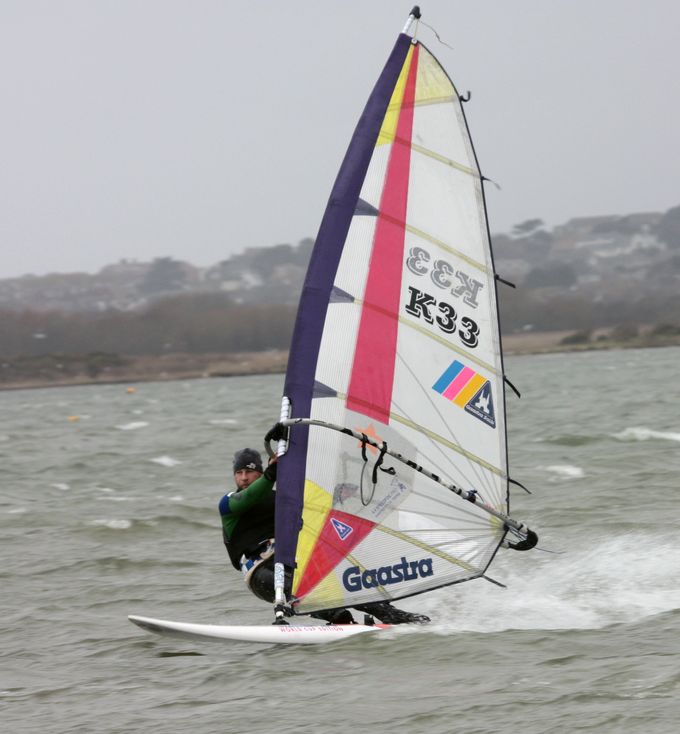
On rigging this sail I was amazed how little luff curve the sail had and down hauling was a one-handed job; the leech was tight and the fullness went right to the head of the sail, plus it has a very high aspect wing with a short boom. Gaastra still resisted the move over to monofilm and the lighter sail construction in the name of consumer reservations over durability. The loop on clew works great with the adjustable outhaul.
On the water the acceleration was poor but once it got going it did feel like it had speed potential, given perfect conditions.
NeilPryde World Cup Slalom 5.0 1991
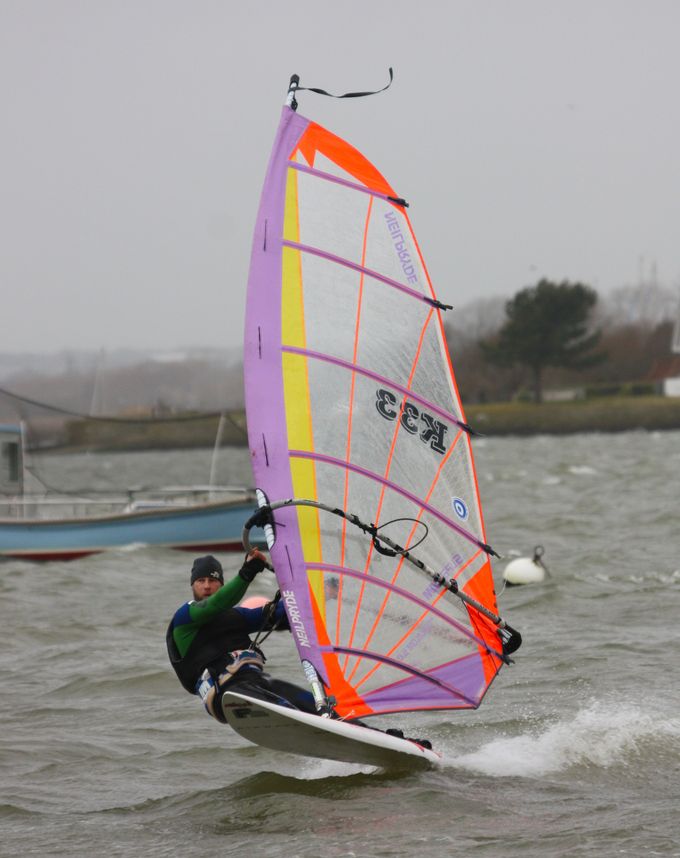
The first thing I noticed is how light this sail is at 3.45 kg. Not only had NeilPryde changed to monofilm but also a light-weight film, resulting in it being a full 1.5 kg lighter than the 2015 NeilPryde Evo 5.0 m and 2.3 kg lighter than the 7.0 that would be used in the same wind speed; that’s more than the weight of the mast! Many predicted these sails would be only last one to two years, but I think we all know how this debate ended.
Unlike the Gaastra the leech did start to fall away when downhauled. The sail had a very tidy luff and foil shape with mini-cams used in the head. On the water it was easy to see the advantage the NeilPryde sailors had this year, as it was light and efficient. It had a good forward pull and was reasonably stable throughout its wind range. It did let you know when you hit the top of its wind range by the leech threatening to flap itself to bits.
F2 Sputnik 270 1991
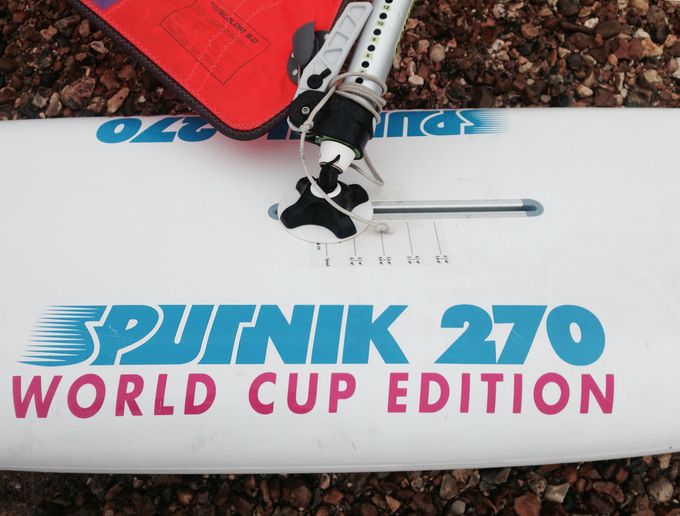
This board has sharp rails all round that gained it a reputation for being harder to gybe, and if you spinout there is a good chance of catching the rail, meaning before you can say ‘radical’ you have swallowed your boom. The mast track’s ridiculously far forward but just about OK with it right at the back.
At 270 it is considerably longer than its modern equivalent, this did help with early planing for a narrow board and suited it more for an all round speed board. I fitted the board with an F-Hot Blade fin, also from the Dave White era and one that Mick Dundee would have been proud of.
On the water it was quite easy to get going and reach some good speeds. It was quite comfortable on the reaches and spinout wasn’t necessarily a problem. Flat out gybing was definitely difficult so a more conservative gybe technique was preferable.
Speed Trials
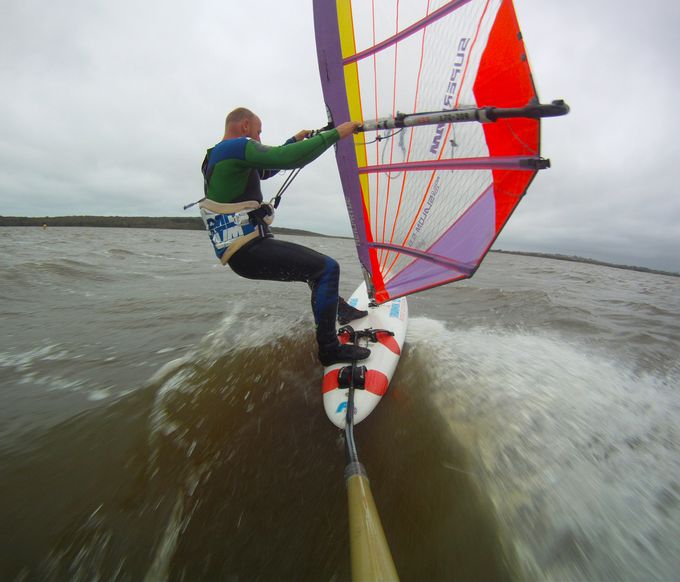
On three different occasions I tested each piece of equipment in Weymouth harbour against a 2015 slalom board and 7.0 race sail, which I would rate as the modern equivalent.
Not going too much into the figures, speeds of around 34 knot peaks and averages of around 30 knots were achieved on the old equipment, whereas the new equipment was 10-15% faster. While this doesn’t sound a huge difference, don’t be fooled by the numbers; modern slalom equipment works on a completely different level with acceleration and ease of gybing all built into a faster board.
When slalom racing on this older equipment, you would be left for dead at every stage of the race by the kit of today. The modern setup’s wind range is fundamental in race conditions when you have to deal with starts, gybes, shifting conditions and wind shadows from other sailors.
On the other hand, the feeling of going flat out and pushing your limits on old equipment is exactly the same and a whole load of fun!
So, what have been the most significant developments?
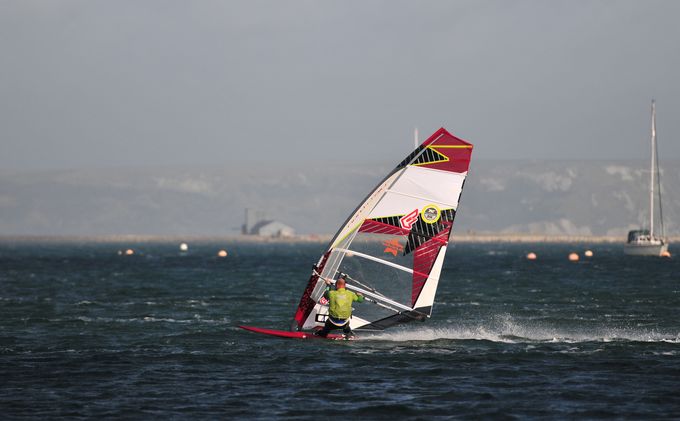
Sails
The first thing that struck me was the improvements in the masts and what a huge part of the setup it plays. 25 years ago most manufacturers released their first carbon masts, this was a huge step forward in weight and reflex but even with the low luff curves and sail tensions they would snap by the dozen, not only this year, but for quite a few years to follow. Sail designers could only work with the masts they had.
Modern rigs have huge tensions and luff curve and in recent years most manufactures have eliminated breakages almost completely. High-tension stiff carbon rod battens shape the foil and lock the draft into position, this paired with ultra-wide luff tubes and twist that is constantly adjusting to the loads, means that modern sails have become incredibly stable and efficient machines.
To cope with these high tensions, the sails need to be very strong and this accounts for them weighing more than the older sails, but this is more than made up for by the power delivery and again equipment failure is rare.
Boards
Modern slalom boards have evolved to be wider and sail beautifully off the fin. This setup accelerates fast and rides over chop without losing speed. The rails are softened and rocker lines are adjusted allowing the board to carve and carry speed through the gybe. Top speed and control are aided by cutouts in the tail and, best of all, as the boards don’t need to be as long, they fit neatly in the van!
In conclusion, windsurfing development has been on a very exiting journey over the last 25 years and we can all reap the rewards of the hours of testing and technology that has gone into making kit faster and easier to sail. At the same time, you don’t need to have the newest equipment to push your own limits and get that ‘on the limit’ exhilarating feeling.
With the explosion of interest in the GPS speedsailing I see there being market driven continual improvement in windsurfing speeds over the next few years. Many brands have produced speed and slalom equipment as one and the same over the recent decades but some brands are now looking to push speeds harder than ever, both in specialist speed and everyday windsurfing conditions. There are exciting times ahead!

